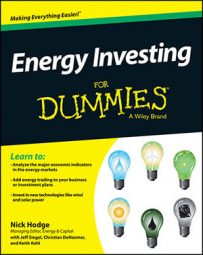When an oil and gas company is involved in the entire process from exploration to distribution, it’s considered an integrated oil company. Energy investors (and everyone else) are likely to recognize these companies right from the get-go, and for good reason.
Why? Well, it’s because they’re the most visible face of the oil industry. At least, they are to the end user. You drive by their drilling rigs, pump your gas at their gas stations, and consistently hear them tout their environmental awareness and alternative energy ambitions on television. They operate upstream (exploration and production), downstream (refining and distribution), and everywhere in between.
You may know some of these key players by another name: Big Oil. A select few of them go by another name: supermajors. The supermajors represent the best in show, the biggest kids on the block, or the most potent polluters, depending on how you view the industry. This table lists the six supermajors and shows you what makes them so big.
| Company | Symbol | Market Capitalization | Revenue, in Millions (FY 2012) | Daily Production (boe) |
|---|---|---|---|---|
| ExxonMobil | XOM | $400 billion | $482,295 | 5.3 million |
| BP | BP | $128 billion | $388,285 | 4.1 million |
| Royal Dutch Shell plc | RDS | $200 billion | $467,153 | 3.9 million |
| Chevron | CVX | $230 billion | $241,909 | 3.5 million |
| Total S.A. | TOT | $115 billion | $224,252 | 2.7 million |
ConocoPhillips (NYSE: COP) would’ve made the list until 2012, when it split into two companies. The spinoff, Phillips 66, comprises the downstream refining segment, while ConocoPhillips maintains the production operations. Because upstream and downstream operations were separated, it’s no longer technically an integrated oil company.
Integrated oil companies often fall into a specific portfolio group called widow-and-orphan stocks. Don’t run for cover — the name sounds a lot worse than it is. Widow-and-orphan stocks typically provide a low-risk investment and have a stable, long-term dividend attached to them. For example, each one of the supermajors offers an annual yield between 2 and 5 percent.
If you’re looking for fast-paced growth and lured by the excitement of huge returns over a relatively short period of time, this class of investments may not be your cup of tea. But they can also provide you with a little safety if you’re heavily invested in smaller, more volatile stocks.
A balanced portfolio spread across several sectors should always include a group of stable, healthy-yielding income investments. These stocks are the ones you can buy and forget about.

